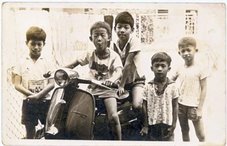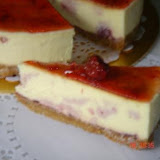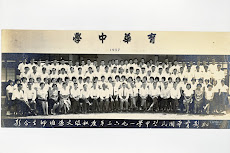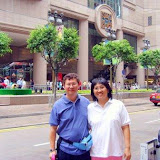Mid-Autumn Festival, Moon Cake and Lantern Festival
The Mid-Autumn Festival (Simplified Chinese: 中秋节; Traditional Chinese: 中秋節; pinyin: zhōngqiūjié), also known as the Moon Festival, is a popular East Asian celebration of abundance and togetherness, dating back over 3,000 years to China's Zhou Dynasty. In Malaysia and Singapore, it is also sometimes referred to as the Lantern Festival or "Mooncake Festival", which is just the same as "Mid-Autumn Festival" but with different names.
The Mid-Autumn Festival falls on the 15th day of the 8th lunar month of the Chinese calendar (usually around mid- or late-September in the Gregorian calendar), a date that parallels the Autumn Equinox of the solar calendar. This is the ideal time, when the moon is at its fullest and brightest, to celebrate the abundance of the summer's harvest. The traditional food of this festival is the mooncake, of which there are many different varieties.
The Mid-Autumn Festival is one of the two most important holidays in the Chinese calendar (the other being the Chinese Lunar New Year), and is a legal holiday in several countries. Farmers celebrate the end of the summer harvesting season on this date. Traditionally, on this day, Chinese family members and friends will gather to admire the bright mid-autumn harvest moon, and eat moon cakes and pomeloes together. Accompanying the celebration, there are additional cultural or regional customs, such as:
- Eating moon cakes outside under the moon
- Putting pomelo rinds on one's head
- Carrying brightly lit lanterns
- Burning incense in reverence to deities including Chang'e
- Planting Mid-Autumn trees
- Lighting lanterns on towers
- Fire Dragon Dances
Shops selling mooncakes, before the festival, often display pictures of Chang'e floating to the moon. .... for more on this please click on this link http://en.wikipedia.org/wiki/Mid-Autumn_Festival
As I remember during our childhood days, every year around this time we would make our own lanterns made from "Milo" tins and sometimes from bamboo and color paper. The "Milo" tins were definitely fire proof. And in the night we would walk around the neighborhood for hours and it was safe to do so. In present time, I don't think it is safe to do so unless you have a big group. Anyway my family attended a Mid-Autumn Festival and potluck gathering organized by Kajang Buddhist Center at Jalan Reko, Kajang. The various food from many participants was delicious. The events included best dress in three categories (traditional dress) which is Indian , Malay and Chinese. Followed by the Lantern Making competition using recycle materials. Various Chinese tea was served. The highlight of the evenings was a lantern walk around the place which covers about 1.5km.
Click on the above for a slide photo display





















